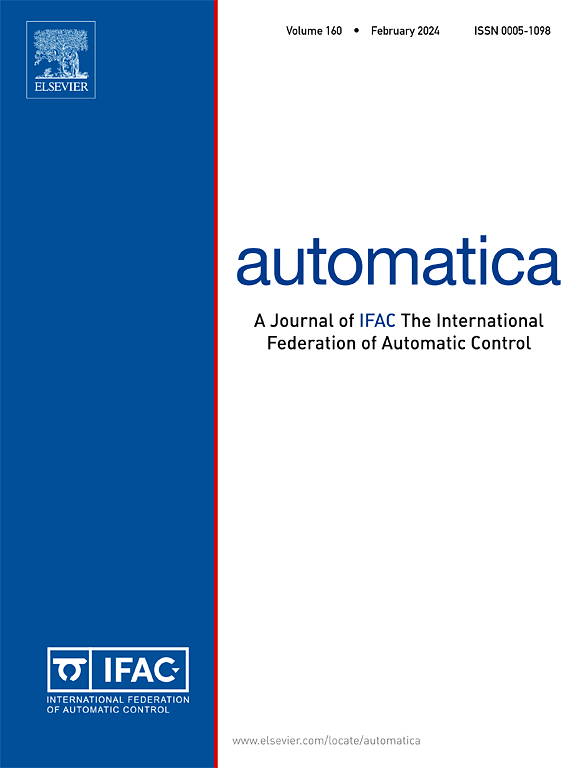Distributed mean-nonovershooting control of stochastic nonlinear multi-agent systems
IF 4.8
2区 计算机科学
Q1 AUTOMATION & CONTROL SYSTEMS
引用次数: 0
Abstract
For stochastic nonlinear multi-agent systems in strict-feedback form, we propose a novel distributed mean-nonovershooting control design under directed leader–followers type network topology. Compared with the existing stochastic distributed tracking control designs, the advantage of our design is that the leader’s output can be tracked by the followers’ outputs without any overshooting. Specifically, we first design new distributed controllers to ensure that the fourth-moment of the output tracking errors between the followers and the leader can be tuned arbitrarily small in the long run while all the states of the closed-loop system remain bounded in probability. Then we prove that the mean of the followers’ outputs can asymptotically track the leader’s output without overshooting if the initial values of the followers’ outputs are suitably selected. Finally, a simulation example is given to illustrate the distributed mean-nonovershooting control design.
随机非线性多智能体系统的分布均值-非超调控制
针对严格反馈形式的随机非线性多智能体系统,提出了一种有向leader - follower型网络拓扑下的分布式均值-非超调控制设计。与现有的随机分布式跟踪控制设计相比,我们设计的优点是leader的输出可以被follower的输出跟踪而不会超调。具体而言,我们首先设计了新的分布式控制器,以确保在闭环系统的所有状态保持概率有界的情况下,在长期运行中,follower和leader之间的输出跟踪误差的第四矩可以被调至任意小。然后,我们证明了如果选择合适的初始值,追随者的输出均值可以渐近跟踪领导者的输出而不超调。最后,通过仿真实例说明了分布式均值-非超调控制设计。
本文章由计算机程序翻译,如有差异,请以英文原文为准。
求助全文
约1分钟内获得全文
求助全文
来源期刊

Automatica
工程技术-工程:电子与电气
CiteScore
10.70
自引率
7.80%
发文量
617
审稿时长
5 months
期刊介绍:
Automatica is a leading archival publication in the field of systems and control. The field encompasses today a broad set of areas and topics, and is thriving not only within itself but also in terms of its impact on other fields, such as communications, computers, biology, energy and economics. Since its inception in 1963, Automatica has kept abreast with the evolution of the field over the years, and has emerged as a leading publication driving the trends in the field.
After being founded in 1963, Automatica became a journal of the International Federation of Automatic Control (IFAC) in 1969. It features a characteristic blend of theoretical and applied papers of archival, lasting value, reporting cutting edge research results by authors across the globe. It features articles in distinct categories, including regular, brief and survey papers, technical communiqués, correspondence items, as well as reviews on published books of interest to the readership. It occasionally publishes special issues on emerging new topics or established mature topics of interest to a broad audience.
Automatica solicits original high-quality contributions in all the categories listed above, and in all areas of systems and control interpreted in a broad sense and evolving constantly. They may be submitted directly to a subject editor or to the Editor-in-Chief if not sure about the subject area. Editorial procedures in place assure careful, fair, and prompt handling of all submitted articles. Accepted papers appear in the journal in the shortest time feasible given production time constraints.
 求助内容:
求助内容: 应助结果提醒方式:
应助结果提醒方式:


